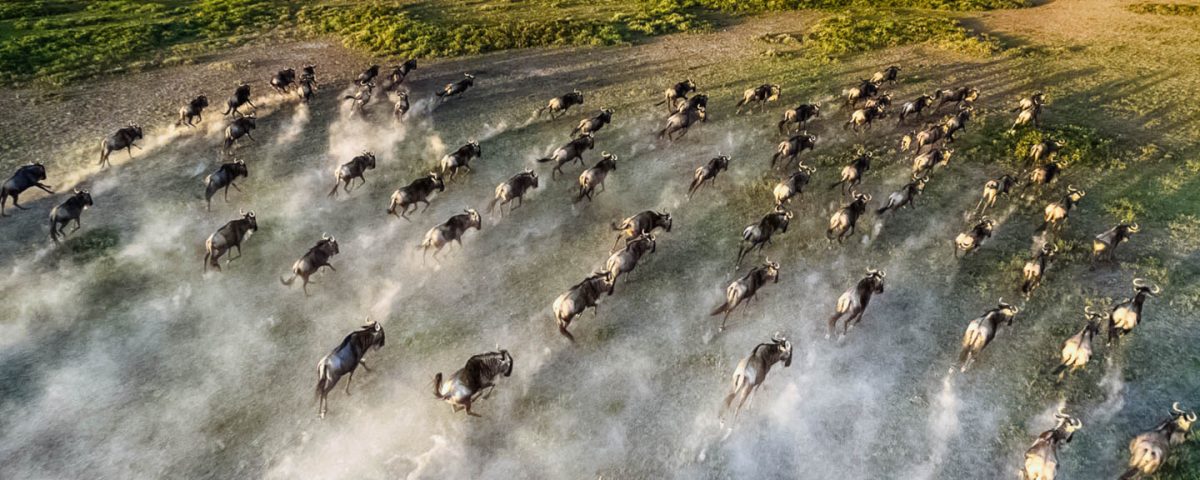
Wildlife tours in Akagera National Park
March 30, 2023
Walking Safaris in Uganda
April 15, 2023What is the Great Migration?
What is the Great Migration? Each year round mammal grazers in large numbers with over 1.5 million wildebeest, and 300,000 zebra along with topi and other mammal grazers mark their legendary circular journey of about 1,800 miles, move in a constant cycle through the Serengeti-Mara ecosystem in search of nutritious grass and water. Guided by survival instinct, each wildebeest will cover 800 to 1,000km on its individual journey along age-old migration routes. a shouldn’t miss on your Tanzania safaris
The spectacle is something to ever witness as the hungry predators including lion, leopard, cheetah, hyena, wild dog, and crocs make sure only the strongest survive in this natural spectacle also known as ‘the greatest show on Earth.’
Each year, the Great Wildebeest Migration begins in the Ngorongoro Conservation Area located in the southern Serengeti in Tanzania and loops in a clockwise direction through the Serengeti National Park and north towards the Masai Mara National Reserve in Kenya.
The migrating mammals are however followed up by the large predators such as the lions, Cheetah, and leopards, in their hunt for their daily prey. The three groups of migrant grazers have different grass-eating habits: as one group eats the top of the tallest grass, the next group will eat away some of the medium-height grass, until finally it is almost completely eaten, and the herds move on.

Wildebeest Migration
When does the Migration in Serengeti begin?
The Wildebeest Migration in Serengeti occurs all year round, however annually it commences in the Ngorongoro Conservation Area in the southern part, and the initial phase lasts approximately from January to March.
Usually, when the calving season begins, there is plenty of rain-ripened grass available for the large numbers of mammal grazers with approximately 260,000 Zebra that precede 1.7 million wildebeest accompanied by hundreds of thousands of other plains game that include over 470,000 gazelles.
During this time of the wildebeest Migration, the wildebeest spend their time on the short grass plains in the southern part of the ecosystem and this usually occurs in February.
The wildebeest graze here for short periods of about 2 to 3 weeks while giving birth to approximately 500,000 calves. Few calves are normally born ahead of this time and of these, hardly any survive. The young calves are noticeable by predators when mixed with older calves from the previous year and thus more prone to predators.
As the rains end in May, the mammal grazers start moving northwest into the areas around the Grumeti River, where they congregate and have a long stay till probably late June.
The large herds of mammal grazers start crossing the bloodthirsty Grumeti and the Mara Rivers in July, a charismatic event where large herds try to go across these rivers that are infested with crocodiles that lie in water in hungry wait to catch their prey.
In the Mara River, the crocodiles wait for the herds and as they try to cross, the crocodiles usually catch them in an effort of trying to kill them, they drown their prey by clutching them in their powerful jaws and dragging them below the water, twisting them to smash them into sizable bits that they can chew and swallow.
At moments, the crocodile may use its tail as a secondary weapon for catching the prey since it can lunge more than half of its body length. This event is thus a popular safari to Tanzania and a beautiful one to witness.
During the long journey from Tanzania to Kenya which involves crossing the Mara and Grumeti Rivers, about 250,000 wildebeest with other grazer mammals are said to die before arrival. The major factors for their death include thirst, hunger, exhaustion, and predators.
After they have successfully crossed these Rivers, the herds arrive in Kenya in late July / August, where they stay for the remainder of the dry season, except that the Thomson’s and Grant’s gazelles move only east/west. In early November, with the start of the short rains, the migration starts moving south again, to the short grass plains of the southeast, usually arriving in December in plenty of time for calving in February.
Best time to witness Wildebeest Migration – What is the Great Migration?
Wildebeest in Tanzania can be seen all year round however the best time is between August and September. During this period, your chances of witnessing a river crossing are generally much higher. Come early October, the rainy season in Tanzania will commence, and the herds will embark on their return journey back to the Serengeti.




